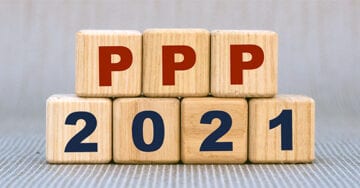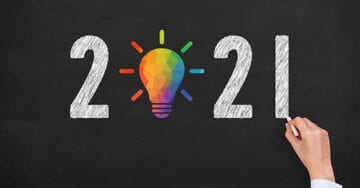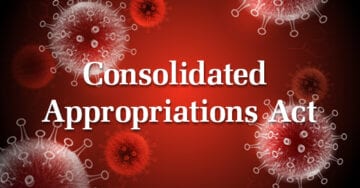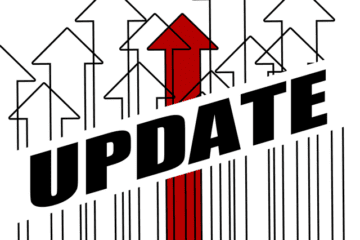You’ve probably heard that the recent stimulus legislation included a provision that removes the 50% limit on deducting business meals provided by restaurants in 2021 and 2022 and makes those meals fully deductible. Here are the details.


You’ve probably heard that the recent stimulus legislation included a provision that removes the 50% limit on deducting business meals provided by restaurants in 2021 and 2022 and makes those meals fully deductible. Here are the details.

Congress recently passed, and President Trump signed, a new law providing additional relief for businesses and individuals during the COVID-19 pandemic. One item of interest for small business owners in the Consolidated Appropriations Act (CAA) is the opportunity to take out a second loan under the Paycheck Protection Program (PPP).

If you’re self-employed and don’t have withholding from paychecks, you probably have to make estimated tax payments. These payments must be sent to the IRS on a quarterly basis. The fourth 2020 estimated tax payment deadline for individuals is Friday, January 15, 2021. Even if you do have some withholding from paychecks or payments you receive, you may still have to make estimated payments if you receive other types of income such as Social Security, prizes, rent, interest, and dividends.

Some might say the end of one calendar year and the beginning of another is a formality. The linear nature of time doesn’t change, merely the numbers we use to mark it.

LB Carlson, LLP has been providing Service Organization Control (SOC) reporting solutions for clients in the graphic arts, manufacturing, credit card processing and software as a service (SaaS) industries for several years.

President Trump signed into law billions of dollars in long-awaited COVID-19 and economic relief. The relief package is part of the nearly 5,600-page Consolidated Appropriations Act (CAA), which also contains numerous other tax, payroll and retirement provisions. Here are some of the provisions most likely to affect individual taxpayers.

The Consolidated Appropriations Act of 2021 (CAA) was signed into law in late December. The sprawling legislation contains billions of dollars in additional stimulus funding in response to the COVID-19 pandemic, as well as numerous unrelated provisions. Let’s take a closer look at the provisions that are most likely to affect your company’s bottom line.

The U.S. House of Representatives and U.S. Senate have passed the Coronavirus Response & Relief Supplemental Appropriations Act, and President Trump is expected to sign the bill immediately. The agreement comes after weeks of negotiations and two funding extensions to keep Congress open until a bill was passed with a $1.4 trillion government-wide funding plan. The $900 billion coronavirus relief portion includes another round of Paycheck Protection Program (PPP) funding, extended unemployment benefits, and direct payments to taxpayers. Here’s an overview of the key provisions in the bill.

Are you thinking about selling stock shares at a loss to offset gains that you’ve realized during 2020? If so, it’s important not to run afoul of the “wash sale” rule.

It’s been estimated that there are roughly 5 million family-owned businesses in the United States. Annually, these companies make substantial contributions to both employment figures and the gross domestic product. If you own a family business, one important issue to address is how to best weave together your succession plan with your estate plan.

In part one of Surviving Adversity: A CEO Panel Discussion, we highlighted the main topics of conversation around revenue following a Printing Industry Midwest (PIM) Financial Executives Council (FEC) meeting. In part two, we’ll cover the discussion by the panelists on how they’ve adapted the way they manage their graphic arts business in light of COVID-19, including the impact to staffing and internal processes.

Unless Congress acts soon, many small businesses may be hit with an unexpected tax bill related to PPP loans. Join us in supporting the AICPA’s efforts to push for deductibility of PPP-funded expenses! Take action by writing to your Congressman to request PPP expense deductions be allowed. To make it easy, the AICPA has drafted an email that you can use.

This webinar addresses the latest changes to the PPP loan forgiveness program, the various applications available, and the process for completion and submission. The information provided in this presentation is current as of November 19, 2020. It is intended for general informational purposes only. Consult with your financial advisor about your specific situation.

On Nov. 18, 2020, the Internal Revenue Service released additional guidance regarding the deductibility of expenses paid using proceeds from a PPP loan. The new guidance states that if a taxpayer received a PPP loan and paid or incurred usually deductible expenses with the loan proceeds, those expenses are not deductible if the taxpayer has a reasonable expectation that they will receive forgiveness. The expenses paid for with PPP loan proceeds are not deductible in the year paid even if forgiveness has not been achieved or applied for by the end of the taxable year. In other words, the expenses are not deductible on taxpayers’ income tax returns that include the covered period. The covered period is either the 8- or 24-week period you elected to spend the loan proceeds.

In a recent Printing Industry Midwest (PIM) Financial Executives Council webinar, a panel of CEOs from several Minnesota printers got together to discuss surviving the adversity, the state of the graphic arts industry, how it’s been impacted, and where to go from here.